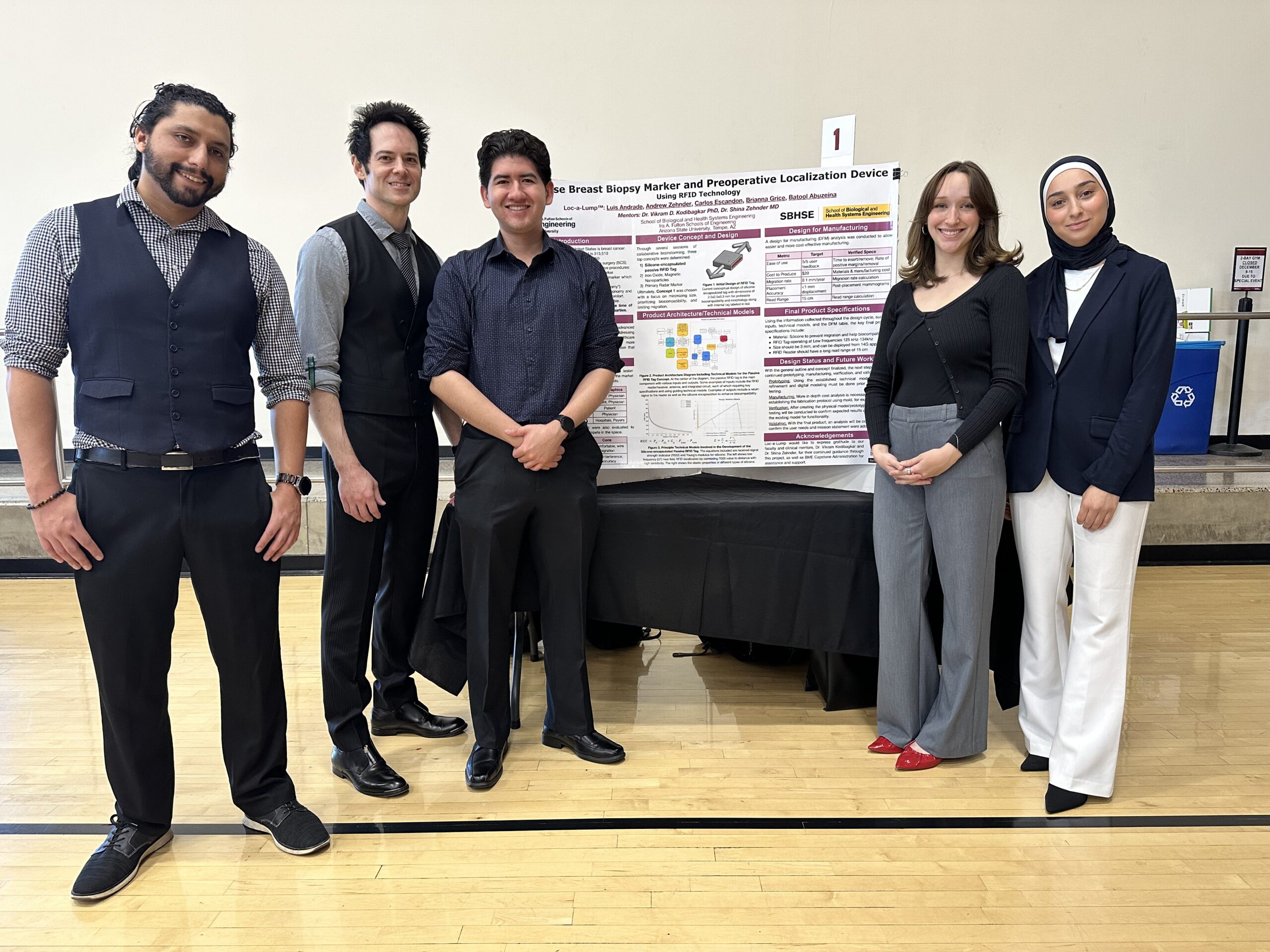
Breast Localization
Biomedical Engineering
Batool Abuzeina, Luis Andrade, Carlos Escandon, Brianna Grice, and Andrew Zehnder
Abstract
As of 2024, breast cancer is the most predominant form of cancer in the United States, with 313,510 new cases and 42,250 deaths in that year alone. Current treatment methods involve a 3-step surgical process for the (1) biopsy and placement of a primary localization marker, (2) placement of the secondary localization marker which is used for tumor removal, and (3) lumpectomy or mastectomy. For more context, after the first step, if the tissue is determined to be malignant, a second procedure must be performed to place the secondary marker for the surgeon to use for localization during the lumpectomy or mastectomy. The most commonplace and cheapest method for this is to use guide wires that extend out of the patient’s body. This method has its downsides because of patient discomfort and the frequency of wire migration, and it also involves two different devices and procedures. We are developing a device that is able to be used as a permanent marker for breast lesion biopsies and also able to be used as a localization device during tumor removal surgeries in place of current competitors. The market for breast localization is $2.1 billion, and all competitors are either primary or secondary markers. Our team’s concept to compete with is a 3D-localizable, silicone-encapsulated, passive RFID tag that serves as both a primary marker that is placed during the biopsy procedure, and a secondary long-term 3D-localization marker that can be used for the tumor removal procedure. By combining these functionalities, an entire procedure can be eliminated, which benefits all parties. The current specifications of this concept are a 2.5×2.5×0.3 mm tag that uses frequencies ranging from 120-150 kHz as well as integrated circuitry and distance estimation models, aiming for less than $350 in manufacturing costs total.
Video
Research poster
Health